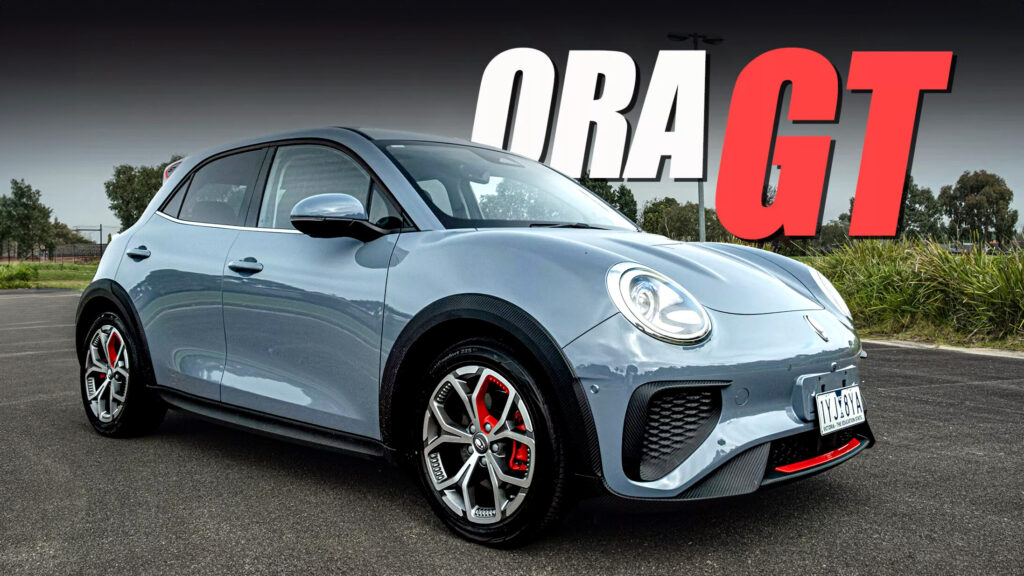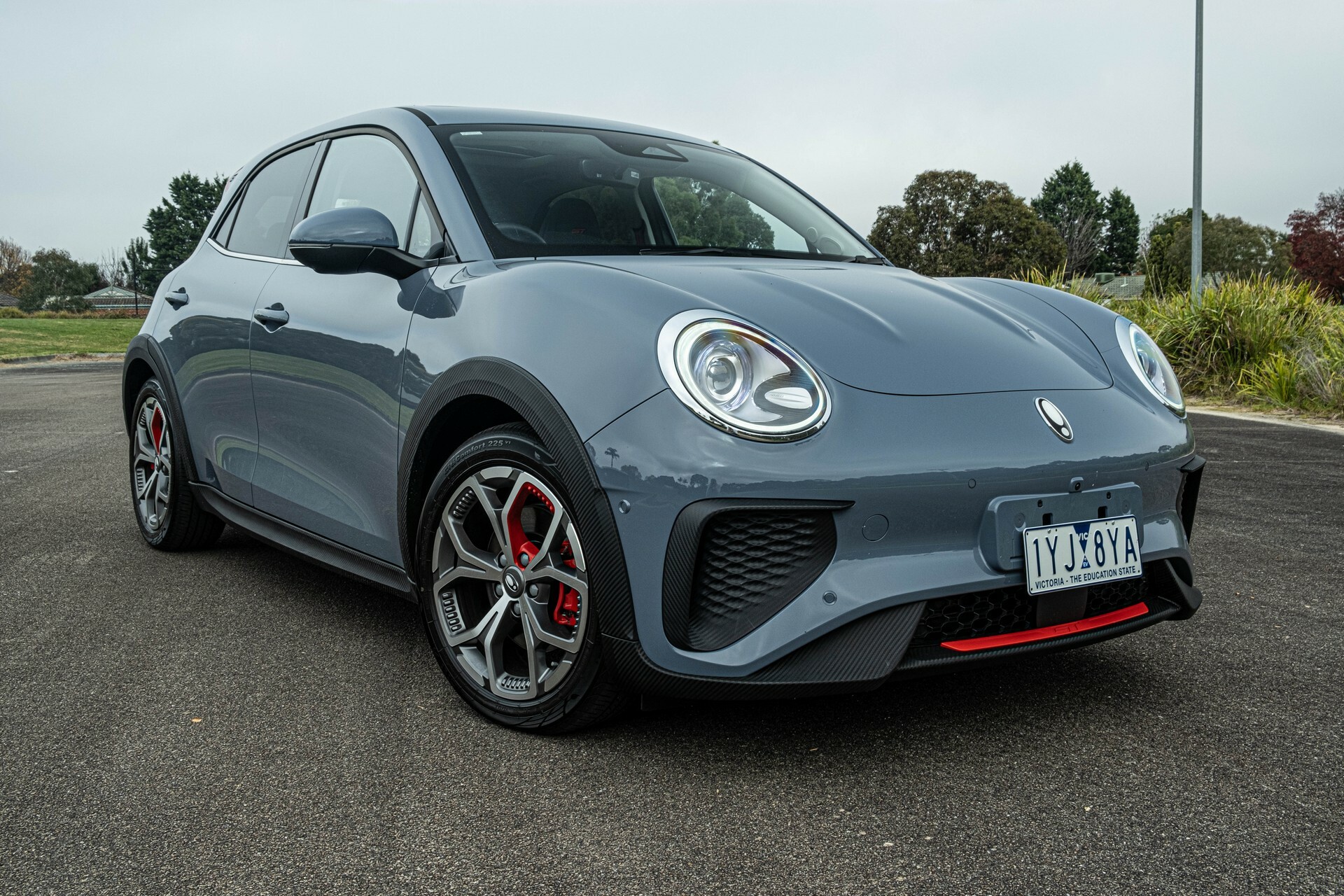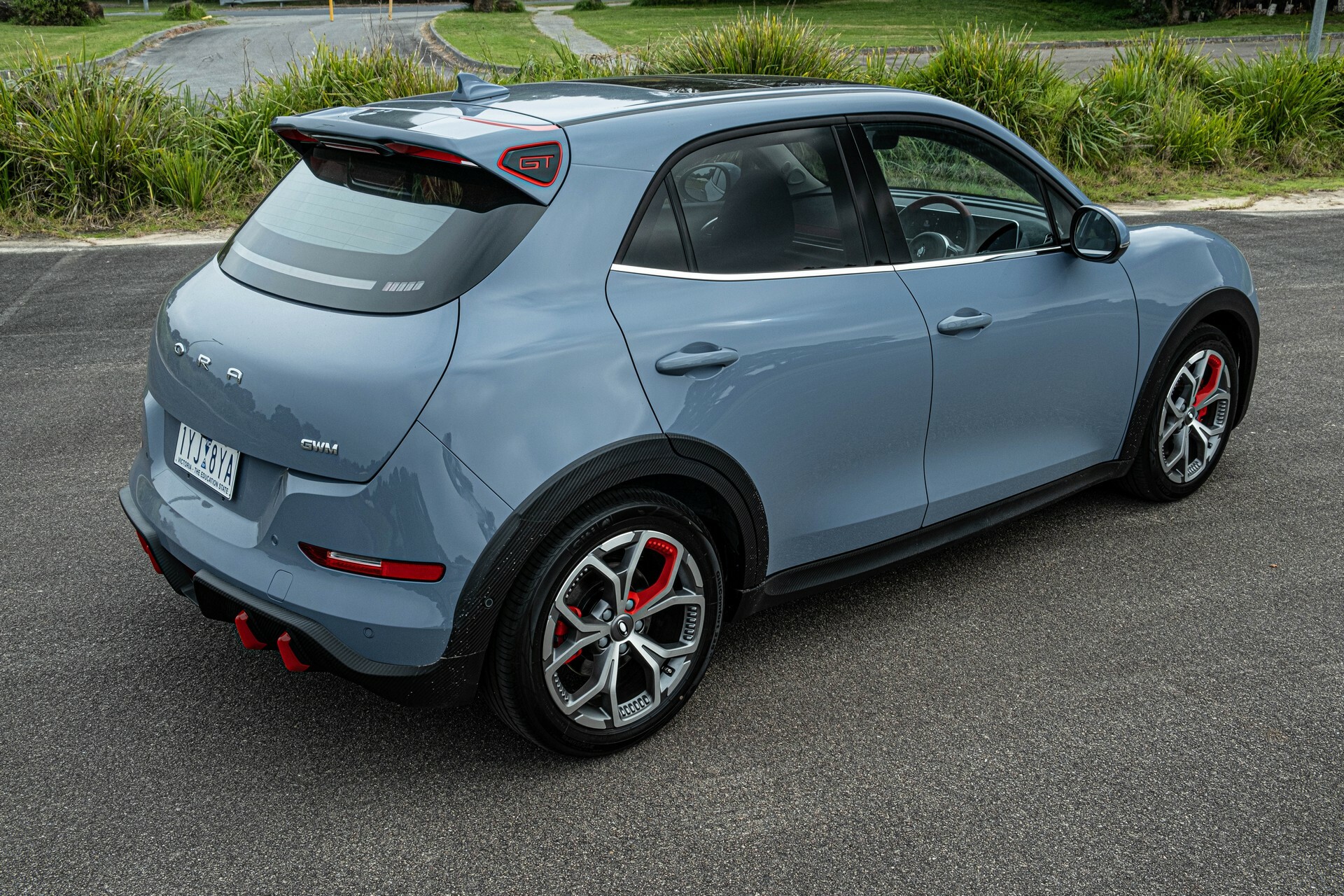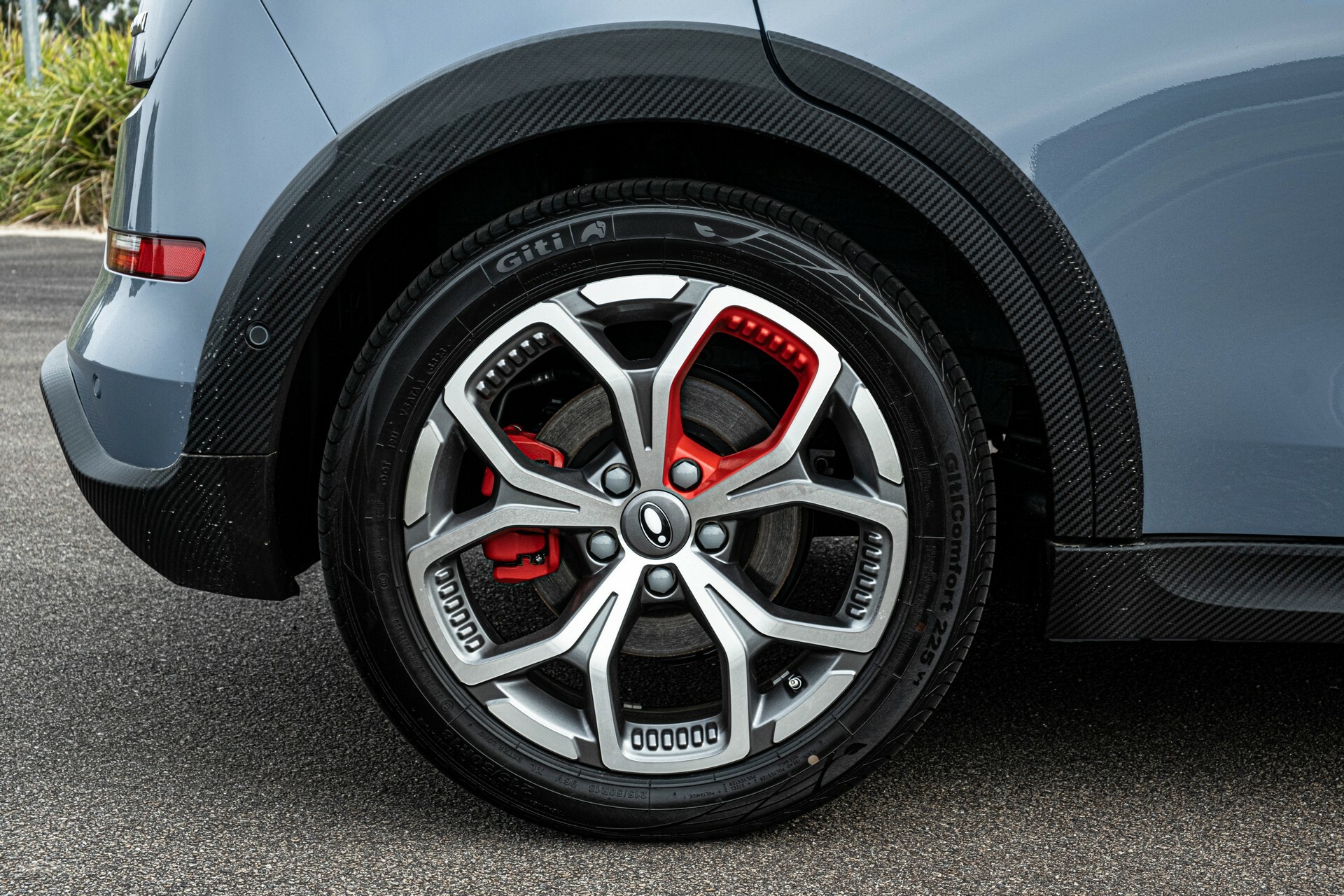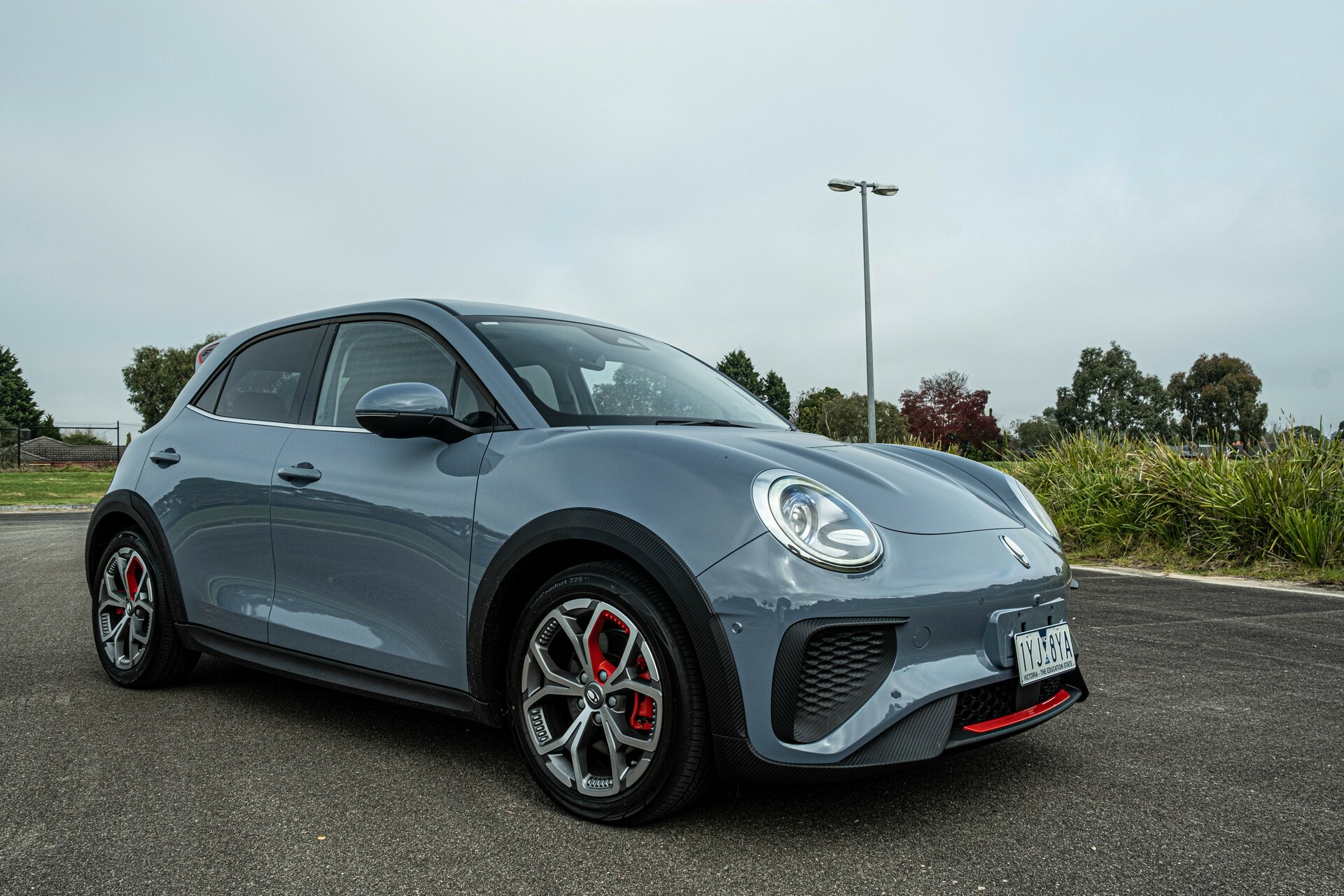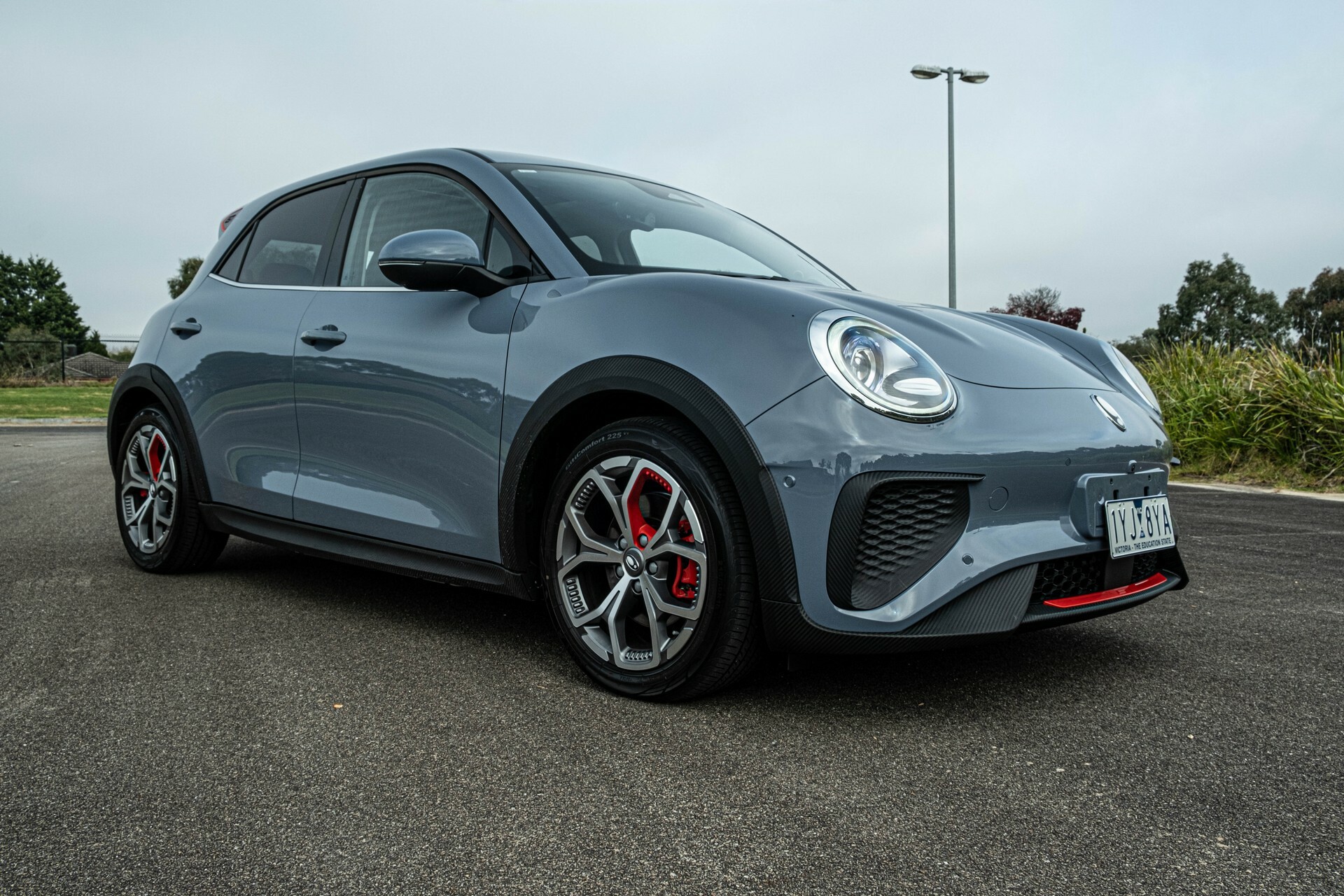Of all the electric vehicles to emerge from China in recent years and be sold around the world, the Ora from Great Wall is one of the most interesting.
Unveiled in late 2020 as the Good Cat, this first model from the Ora brand generated quite a bit of buzz online because of its cute, VW Beetle-inspired design. Before long, the car landed in Europe and was renamed the Funky Cat. Now, the electric hatchback is available in Australia and has been rebadged yet again, sold locally as the GWM Ora.
Quick Facts
While Great Wall seems a little confused about what names work in which markets, it has developed and produced an EV that serves as a compelling rival to the BYD Dolphin and MG 4. So what makes the Ora tick?
To find out, we recently lived with the flagship Ora GT for a week. In Australia, the GT has been positioned above the entry-level AU$39,990 (~$26,500) Ora Standard Range, the AU$45,990 (~$30,500) Ora Extended Range, and the AU$48,990 (~$32,500) Ora Ultra. The GT isn’t cheap, starting at AU$51,990 (~$34,500), excluding on-road costs.
Photo Credits: Brad Anderson/CarScoops
Cute and creative
The Ora GT stands out from all other versions thanks to its body kit. Changes start at the front end where there are a pair of gaping wide air intakes (which are fake…) and a revised lower fascia that’s also slightly edgier than the standard model.
Great Wall’s designers have made further changes along the sides of the car, grafting on faux carbon fiber wheel arches and installing new 18-inch alloy wheels with red accents. Other alterations include a faux carbon fiber rear diffuser, red brake calipers, and a new rear spoiler. It looks just as bold as you’d expect the sporty version of an electric hatchback to look. The only problem is that this isn’t any sportier than the standard Ora.
Read: Thai Tuner Makes Ora Good Cat Look Like A 911 GT3 RS Hatchback
You see, like the standard model, the Ora GT comes with a 63 kWh nickel manganese cobalt battery driving an electric motor at the front axle with 126 kW (169 hp) and 250 Nm (184 lb-ft) of torque. While the Ora GT is relatively small, it’s still quite heavy, tipping the scales at 1,580 kg (3,483 lbs) and needing 8.5 seconds to hit 100 km/h (62 mph). Bizarrely, that makes it 0.1 seconds slower to 100 km/h than the Ora Extended Range and Ora Ultra.
Photo Credits: Brad Anderson/CarScoops
So what do you get for your extra money? The upgrades enjoyed by the Ora GT are almost entirely visual, although Great Wall has included launch control and an individual driving mode. Despite the odd nature of the Ora GT, I was quite impressed with it.
A cabin that surprises
The cabin of the car is one of the aspects that I was most fond of. Like so many other cars out there, a pair of 10.25-inch screens placed atop the dashboard immediately catch the eye.
The digital instrument cluster has a high-quality display, although the black graphics were a little disappointing. There is limited scope to customize what the screen shows and there’s plenty of space that could be filled had GWM’s software wizards spent a little more time on it. The same can be said about the infotainment screen.
The layout of the menu is a tad confusing but after a few days, I did get used to it and all of the smartphone-inspired settings and displays. Important vehicle settings are controlled almost exclusively through the display, including settings for brake regeneration, certain driving modes, and a toggle for the ESC. The Ora GT supports wired and wireless Apple CarPlay but not Android Auto connectivity.
Photo Credits: Brad Anderson/CarScoops
There are four prominent switches positioned below the central air vents used to turn on the front and rear demisters, the air conditioning, and the fans. A large button for the hazard lights is positioned between them. These toggles feel high quality and are a highlight of the cabin. Indeed, they feel far more premium than the simple plastic buttons most carmakers rely on.
Elsewhere, the Ora GT includes a wireless charging pad, two USB-A ports, two small cupholders, and a rotary gear selector. I was particularly fond of the soft-touch suede-like material finished in red and black and stretching across the dashboard. While there are plenty of black, scratchy plastics throughout, there are also many premium materials used. For example, faux leather adorns the seats. These seats also include heated, ventilated, and massage functions, although they are only accessible through the infotainment screen, making them tiresome to enable.
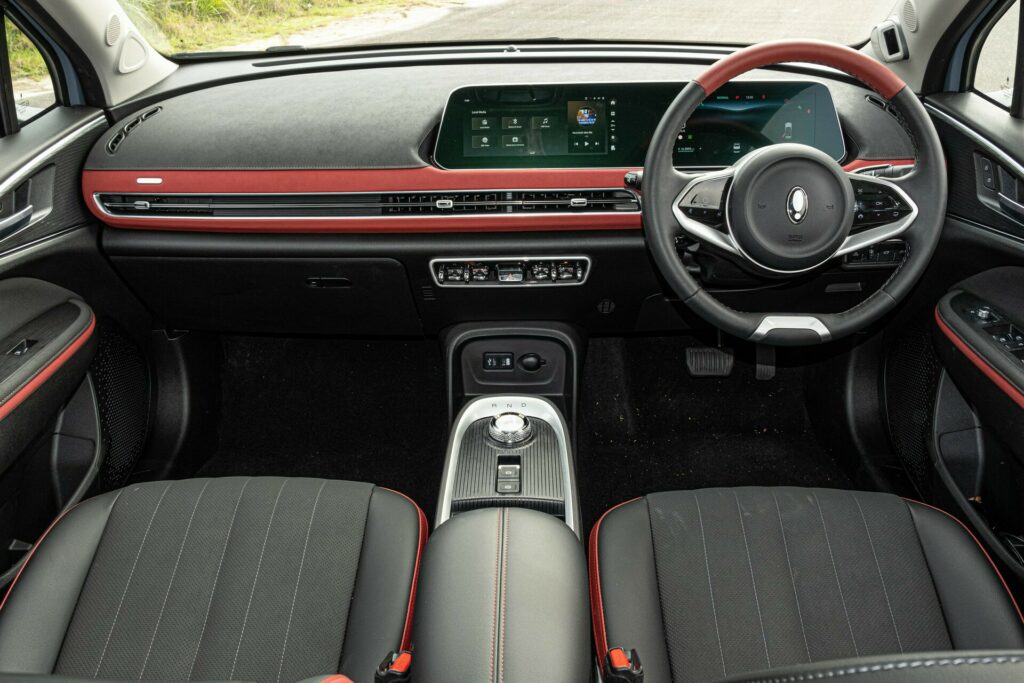
GWM has also equipped the Ora GT with a panoramic glass sunroof while found in the second row is plenty of red and black faux leather. Headroom is limited for anyone over 6 foot but there’s a generous amount of legroom. While I haven’t tested the MG 4 and BYD Dolphin, I can say the cabin of the Ora GT is as well-appointed as the smaller (and more expensive) Fiat 500e.
A refined and comfortable daily
Honestly, I didn’t have high hopes for how the Ora GT would feel out on the open road. I thought it might feel cheap, rattly, and unrefined. It was none of those. In fact, it felt every bit as polished as any Korean or Japanese EV.
The first thing that stands out is the quality of the ride. All too often, EVs are quite firm as stiff suspension is used to cope with the sheer mass of a large battery pack. The Ora GT is the opposite. It is supremely plush yet and rides beautifully over all road surfaces. There are dozens of large speedbumps around the area I live and the Ora dealt with them very well, offering a better ride than some cars I’ve tested that cost three times as much.
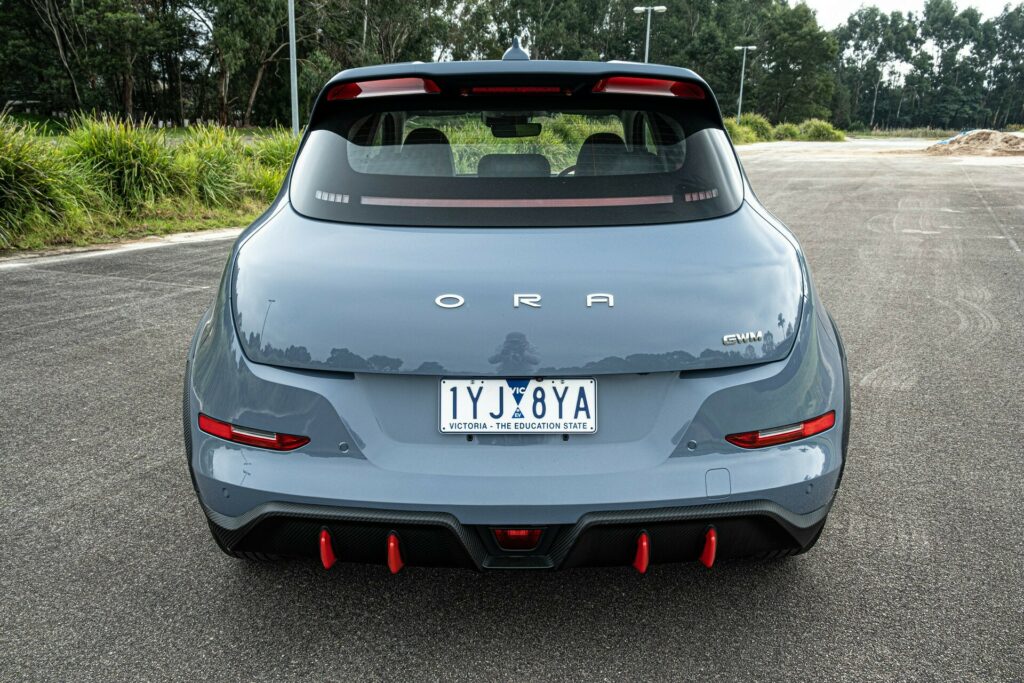
The downside of the soft ride is that the EV moves and shuffles quite a lot when you’re hustling it through corners. Our test car was fitted with GitiComfort 225 V1 tires at all four corners, measuring 215/50 R18. The tall sidewall no doubt aided in the car’s comfort. As the name of these tires suggests, they are not designed with performance driving at the fore but they performed well in the twisties. They are also very quiet.
The Ora GT as a whole is virtually silent up to highway speeds. There is a small hum from the motor but it’s not as intrusive as the whine of the Fiat 500e’s motor.
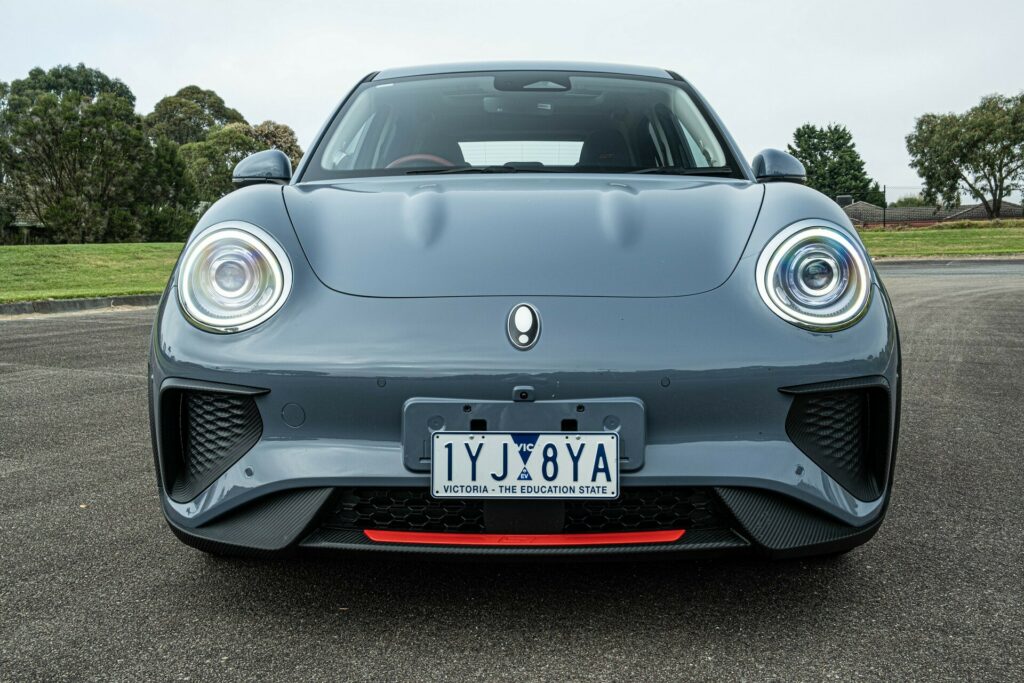
The Ora looks rather small in photos but it’s quite heavy, tipping the scales at 1,580 kg (3,483 lbs). However, as the battery pack is in the floor, it hides its weight well. GWM quotes an energy consumption of 16.8 kWh/100 km over the combined cycle, but we were able to get it down to 16.4 kWh/100 km. By comparison, we averaged around 13 kWh/100 km in the Fiat 500e.
Read: China Chasing Tesla’s European Sales With 394-HP Ora Lightning Cat EV
The Ora GT has several drive modes, including Automatic, Normal, Eco, Eco+, Sport, and Individual. When you cycle between these modes, the car plays different sounds. Dig through the menu, and you’ll also find settings to adjust the level of regenerative braking. A one-pedal driving mode is also available. It’s also possible to adjust the weight of the steering between Comfort, Normal, and Sport modes.
While having this level of customization is nice, it would be better if there were more physical buttons to control these settings. As it stands, sorting through the various menus is difficult on the move, particularly given the small font and toggles found in the infotainment software.
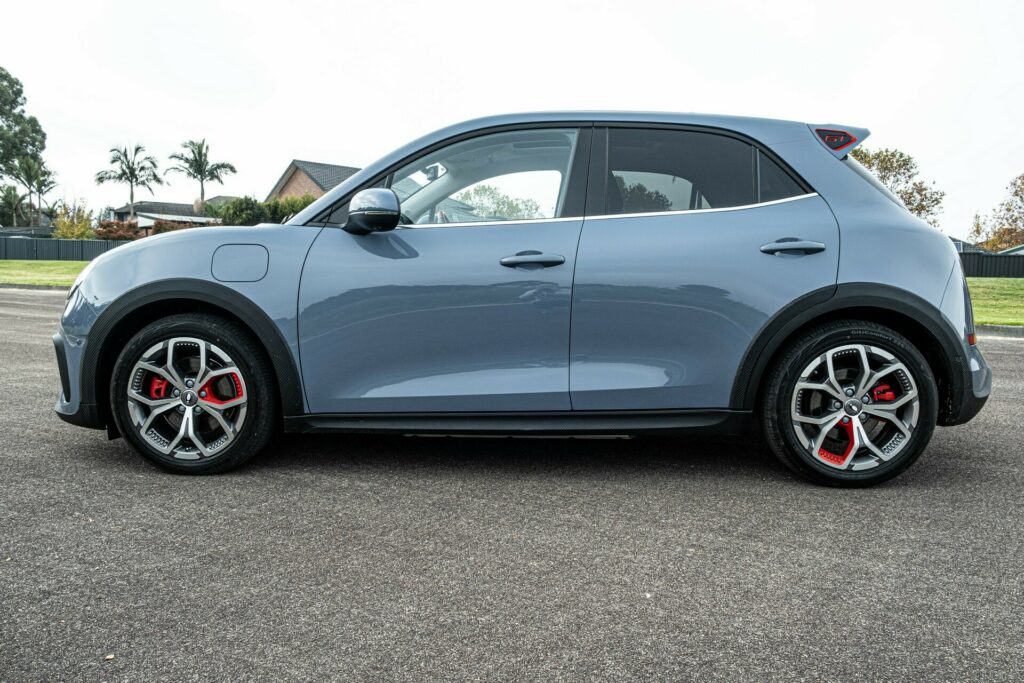
Verdict
The Ora GT has a lot going for it. It’s well-appointed and drives well, although we suspect the exterior styling won’t be to everyone’s taste. It’s also quite expensive and would be a far more compelling option if priced between AU$35,000 (~$23,200) and AU$40,000 (~$26,500). Overall, then, it is really good, but not great.



